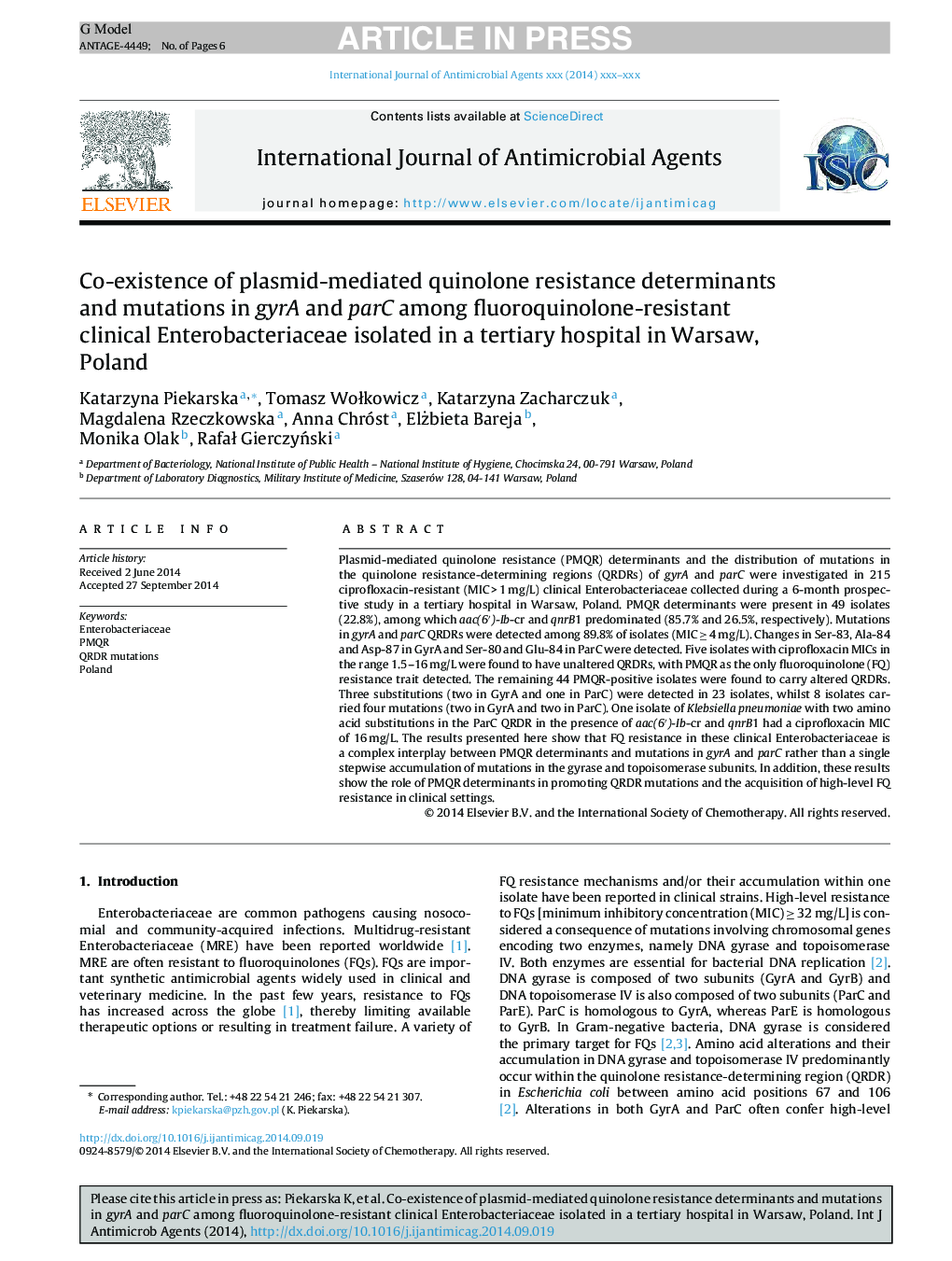| Article ID | Journal | Published Year | Pages | File Type |
|---|---|---|---|---|
| 6117797 | International Journal of Antimicrobial Agents | 2015 | 6 Pages |
Abstract
Plasmid-mediated quinolone resistance (PMQR) determinants and the distribution of mutations in the quinolone resistance-determining regions (QRDRs) of gyrA and parC were investigated in 215 ciprofloxacin-resistant (MIC > 1 mg/L) clinical Enterobacteriaceae collected during a 6-month prospective study in a tertiary hospital in Warsaw, Poland. PMQR determinants were present in 49 isolates (22.8%), among which aac(6â²)-Ib-cr and qnrB1 predominated (85.7% and 26.5%, respectively). Mutations in gyrA and parC QRDRs were detected among 89.8% of isolates (MIC â¥Â 4 mg/L). Changes in Ser-83, Ala-84 and Asp-87 in GyrA and Ser-80 and Glu-84 in ParC were detected. Five isolates with ciprofloxacin MICs in the range 1.5-16 mg/L were found to have unaltered QRDRs, with PMQR as the only fluoroquinolone (FQ) resistance trait detected. The remaining 44 PMQR-positive isolates were found to carry altered QRDRs. Three substitutions (two in GyrA and one in ParC) were detected in 23 isolates, whilst 8 isolates carried four mutations (two in GyrA and two in ParC). One isolate of Klebsiella pneumoniae with two amino acid substitutions in the ParC QRDR in the presence of aac(6â²)-Ib-cr and qnrB1 had a ciprofloxacin MIC of 16 mg/L. The results presented here show that FQ resistance in these clinical Enterobacteriaceae is a complex interplay between PMQR determinants and mutations in gyrA and parC rather than a single stepwise accumulation of mutations in the gyrase and topoisomerase subunits. In addition, these results show the role of PMQR determinants in promoting QRDR mutations and the acquisition of high-level FQ resistance in clinical settings.
Keywords
Related Topics
Life Sciences
Immunology and Microbiology
Applied Microbiology and Biotechnology
Authors
Katarzyna Piekarska, Tomasz WoÅkowicz, Katarzyna Zacharczuk, Magdalena Rzeczkowska, Anna Chróst, Elżbieta Bareja, Monika Olak, RafaÅ GierczyÅski,
